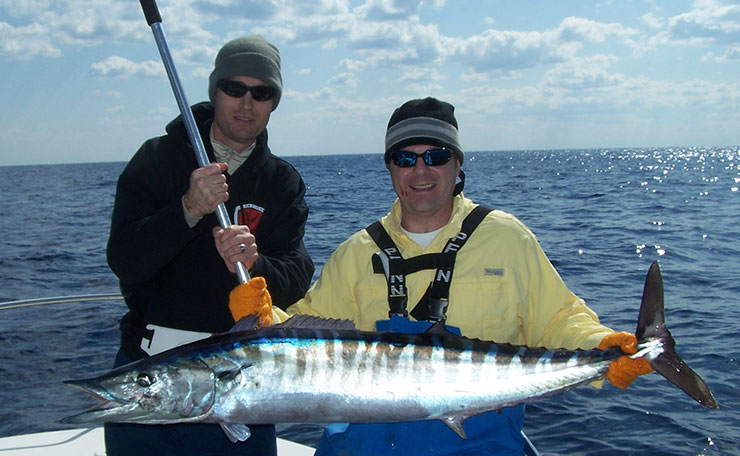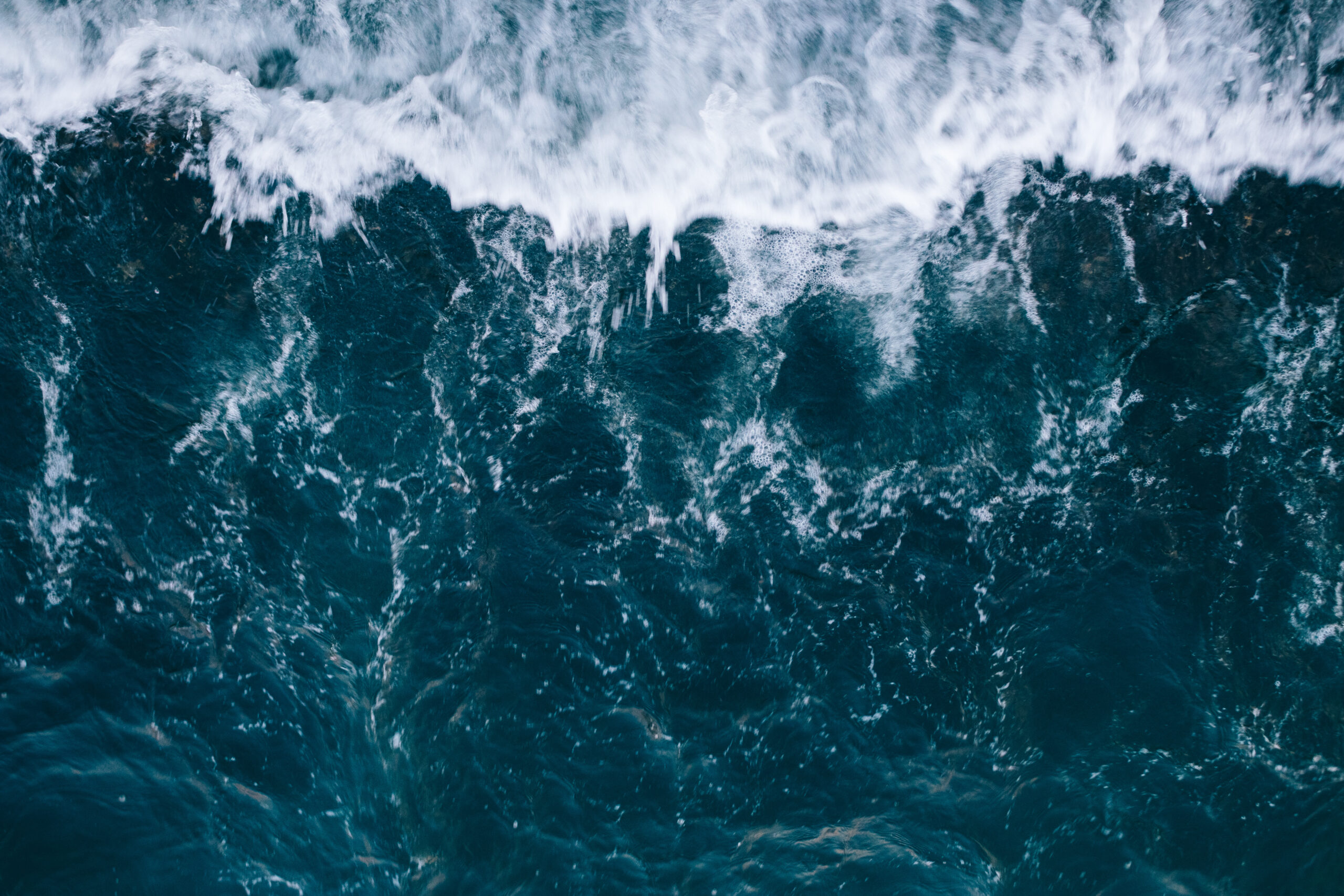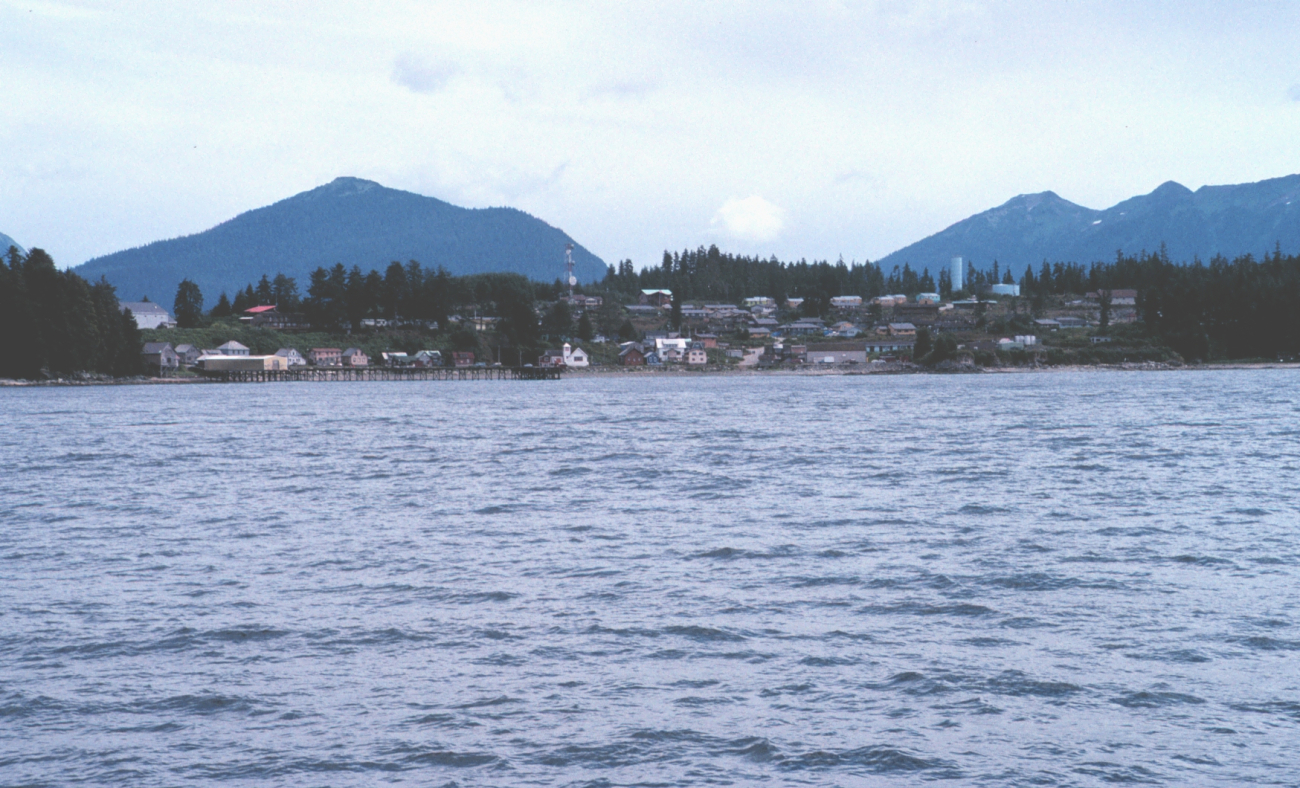Hunting for Quicksilver: Testing Local Seafood for Mercury

Selecting seafood can be mind boggling. Low in saturated fats and packed with healthful omega-3s, fish are definitely good for you. Except when they’re not. So what’s in your seafood that you might want to avoid? Some North Carolina scientists sought to answer a part of that question.
Researchers from North Carolina State University and Duke University set out to determine mercury levels in fish commonly caught and consumed in North Carolina, recognizing that accurate local consumer information about seafood was lacking.
What they found about the fish and shellfish they sampled is good news to the ears — and stomachs — of local seafood lovers, fishermen and retailers alike.
In general, the majority of seafood the researchers tested had low levels of mercury, lower than the U.S. Environmental Protection Agency’s consumption guidelines. In instances where researchers found samples with concentrations over EPA’s recommended levels, they were from fish that were known to be high in mercury.
NC State scientists studied mercury levels in commercial and recreational offshore fish, while Duke researchers tested inshore species for mercury and PCBs. Both projects were funded by the N.C. Fishery Resource Grant Program, which is administered by North Carolina Sea Grant.
“This research focuses on providing information about locally caught species, which is as accurate as you can get to make your own decisions about North Carolina seafood. Further, the research focuses on mercury and PCBs, both contaminants often mentioned when discussing seafood choices,” says Marc Turano, who oversees FRG projects for Sea Grant.
But the studies also were driven by another factor: to determine if regional and national seafood guides were serving local consumers.
“There is a lot of confusion for those who attempt to purchase seafood,” Turano adds. “Most of this confusion surrounds how various groups determine their recommendations.”
For example, Monterey Bay Aquarium, Food and Water Watch, and Blue Ocean have seafood watch lists that advise consumers what seafood to eat based on their definition of sustainability and their position on catch methods, with indicators for species considered high in mercury. However, these lists are based on nationwide or regional information. The researchers wanted to provide specific data on North Carolina seafood.
“We’re advocating for, whenever possible, providing consumers with local information for seafood consumption,” explains Derek Aday, a faculty member in NC State’s biology department. However, the final decision about what to eat is not his to make.
“Our job isn’t to tell people how to act,” he says about his role as a scientist. Instead, it’s “to give as much information as we can give so that, within their own sort of constraints, their own feelings about risk tolerance, they can make informed decisions.”
The level of mercury that consumers will accept varies from person to person. “The bottom line is that everybody has a different level of risk tolerance,” Aday observes.
TESTING MARINE FISH
Mercury occurs naturally in the Earth’s crust but the majority in the environment is from human actions, such as coal-fired power plants, mining activities and industrial discharge. It is a neurotoxin. High doses can damage the brains and nervous systems of fetuses, babies and young children.
In aquatic systems, mercury can be converted into methylmercury, a form that can be absorbed and stored, or bioaccumulated, by fish and other sea creatures. There are several drivers of mercury accumulation in fish, mainly size of the animal, its trophic level or location in the food web, and pH of the water where it is found. The main source of human exposure to mercury is through seafood.
There are several reasons why mercury content differs in fish. You are what you eat applies to fish too. “If you’re at the top of the food chain and you’re eating a lot of other fish, then your body’s burden is representative of the food that you’ve been consuming over the course of your life,” Aday explains. A fish that is high in the food web likely eats other fish and invertebrates, further concentrating mercury in its body.

Furthermore, size — or length, in this case — matters. “The bigger you are, the longer you’ve been around to accumulate mercury,” he adds, noting that there’s often a correlation between size and age. “Most of the time, being really big means that you’re old. But being really big also means you’ve eaten a lot of food to get to that size. And so mercury can be a problem from that standpoint.”
Aday led a team that studied popular offshore species landed in North Carolina. They sampled mahi-mahi, king mackerel and wahoo from recreational anglers off Dale Britt’s charter boat, Sensation, that is based in Morehead City. Additionally, they collected red porgy, red grouper and gray triggerfish from a Carteret County fish house, popular fish that were available at that time.
The researchers tested the samples for mercury and compared their results to EPA and U.S. Food and Drug Administration mercury advisory levels.
The EPA’s mercury action level is no more than 0.3 milligrams of mercury in each kilogram of fish or shellfish. The EPA will issue seafood consumption advisories if mercury is above that limit. The FDA draws its line at 1 milligram per kilogram. Beyond that, the FDA can take legal action to remove the contaminated food from the marketplace.
“Sometimes our fish were much lower in mercury than what those guidelines would suggest and sometimes they were much higher in mercury than what the guidelines would suggest,” Aday explains of both federal limits.
His team found that red porgy, gray triggerfish and mahi-mahi were consistently safe to eat, with mercury levels well below EPA consumption recommendations. The wahoo and red grouper they sampled often exceeded EPA’s levels. The king mackerel they tested consistently surpassed both EPA and FDA advisory levels.
DECONSTRUCTING THE ‘DIRTY DOZEN’
The Duke study originated from a question posed by Mark Hooper, a crabber from Smyrna. In summer 2009, he noticed that blue crabs and oysters — two of the state’s largest commercial fisheries — were on Food and Water Watch’s so-called dirty dozen list because of mercury concerns. He wanted to find out if that was true for North Carolina.
“And we didn’t have a really good answer,” recalls Amy Freitag, a doctoral candidate in marine science and conservation at Duke. “It turns out that most of the studies that had been done had either been in the Chesapeake or in the Gulf of Mexico.” She was unsure if those results reflected the conditions in local waters.
To find out, Freitag divided the state into north, central and south fishing districts and collected samples from each region. She selected inshore species that she could pinpoint to a particular location and that represented “a traditional fishing cycle,” allowing her to conduct her work throughout an entire year.

Freitag, who blogs on science topics as Bluegrass Blue Crab on Southern Fried Science (www.southernfriedscience.com), also checked for PCBs, chemicals that can cause cancer and other health problems.
The team, led by Duke zoology faculty member Dan Rittschof, tested hard and soft crabs, clams, white and pink shrimp, oysters, spot, and mullet — all small, short-lived and low trophic-level species — from local sources. The people who provided samples received a report on the mercury and PCB content of the seafood they provided.
“It turns out that we’re much cleaner than the national recommendations. On an average of 10 times less mercury,” Freitag says. And PCB levels were very low too. More than 97 percent of her samples had mercury and PCB concentrations below EPA and FDA levels of concern.
“Only a handful of the samples in the study turned out to be unsafe to eat. And of those, most of them came from known areas of contamination that are not usually open for harvest anyway,” she adds. “So in terms of what’s getting into the market, it seems to be pretty safe.”
Contamination levels were mostly location based. Seafood found in developed areas or near peat bogs, which are a source of natural mercury, had slightly elevated levels of mercury. Fish harvested near landfills or Hewletts Creek, which has experienced sewage spills, had higher PCB concentrations in their system.
In light of the results, Freitag explains that ecological, rather than political, boundaries are better suited for these guidelines. “Water body seems to be really important, not states, not fisheries regions,” she notes.
Hooper, who has worked on other FRG projects, was curious about the quality of seafood from his area. “It was a little bit risky in that, if we had found contaminants, you’re really going to have to own up to that,” he reflects.
“But in my opinion, the seafood was either gorgeous, like I know it is, or it’s contaminated,” he continues. “And if it’s contaminated, then we’ve got some issues that we need to deal with. If the crabs in Core Sound have PCBs and mercury, then we’ve got a larger problem that we need to start to address. So I didn’t mind taking that kind of chance, from my point of view, and putting the stuff out there.”
RULES TO EAT BY
Hooper is an avid seafood fan, making it a point to eat it regularly. His record is 60 consecutive days. And he’s not above using himself and wife Penny, who is a biology instructor at Carteret Community College in Morehead City, as test subjects. He’s had their hair checked for mercury. The results show that they have very low levels in their system.
“I think my point stands that this water here, the water quality is spectacular, especially on Core Sound. We’re bounded by a national seashore. There’s only 10 of these in the nation,” he marvels, citing Cape Lookout National Seashore.
But what about the rest of us who don’t have access to fish fresh off the boat?

In addition to EPA and FDA fish consumption guidelines, Aday has a couple of rules of thumb for the consumer who wants to select a fish with lower mercury content. First, stay away from fish that are longer lived or at the top of the food chain. Second, within a species, pick the smaller specimens.
Freitag notes that her results say that inshore fish, which tend to be lower in mercury than their offshore cousins, are a safer bet. Many local fishermen would agree.
“Most fish we use are smaller, inshore fish,” says Eddie Willis, who is part of the Core Sound Seafood cooperative where a group of fishermen combine their catch to provide shareholders with a weekly supply of locally caught seafood. And even when it offers offshore fish, the co-op selects smaller specimens.
Freitag says her study also highlights the need for consumers to understand the nuances of food. “I’m looking at it as more of a support for traceability of food and understanding where it comes from and the risks associated with that particular place,” she notes.
PUTTING IT ON THE PLATE
At a time when anyone with a smartphone can download an app to find out what seafood to eat according to national seafood guides, local information is lacking. And often, national or zegional guides paint with a broad brush, using data from a handful of samples and extrapolating that information to a larger area when water quality can vary greatly between neighboring water bodies. Nor do they list all the seafood a consumer can find in North Carolina.
“These national averages and these regional guidelines do have a purpose, and they are relatively informative. But when it comes to local consumption advisories, particularly for mercury, local information is really important in determining consumer risk,” comments Dana Sackett, then a post-doctoral researcher at NC State and part of Aday’s team.
Aday agrees. “The take-home message is that whenever we can provide local information to consumers, that will be more reliable than regional and national guidelines that are currently most available.”

Local contaminant levels might not always match those stated in regional and national guidelines. For example, one guide says that blue crabs may contain unhealthy levels of mercury and PCBs but that’s not what the Duke study found for crabs in North Carolina.
Certainly, navigating seafood consumption guidelines can ruin anyone’s appetite. And there are some who have sworn off seafood because of the confusion around making selections. However, Aday encourages consumers to persevere.
“A lot of studies suggest that the benefits of fish consumption outweigh the risks, so unless you’re eating multiple meals per day for a long period of time — if you’re not a nursing mother and you’re not a young child, and unless they’re talking about the really, really high-mercury species like shark and tilefish and king mackerel — then probably regular fish consumption is a good thing,” Aday notes.
And Sea Grant’s Turano is helping get the word out by condensing the data from these projects into a brochure. “The pamphlet is a consumers’ digest version of the study results, providing summary data from the study on mercury in locally harvested fish. We are trying to arm the seafood consumer with the most up-to-date information to make the best decisions about buying seafood,” he says. “In the end, most of North Carolina’s seafood is safe to eat.”
Hooper, however, does not need convincing.
“In my opinion, this is the finest food on earth. To be able to have access to locally caught, fresh seafood from these waters is spectacular. And with that comes the responsibility on my part to make sure that I handle it as best as I possibly can,” he muses. “And just hope that you people enjoy it and just have a good night when you eat it. Kinda think of us a little bit.”
RESOURCES
The N.C. Division of Water Quality is in the process of developing a statewide total maximum daily load, or TMDL, for mercury. Officials will estimate the proportions of mercury contributions to water and fish from different sources and determine the appropriate reductions needed. Public comments to the TMDL were to be accepted until June 18. The DWQ monitors the state’s surface water and groundwater. For more on the TMDL, visit: portal.ncdenr.org/web/wq/ and search for “mercury TMDL.”
• To view the final Fishery Resource Grant reports, go to: www.ncseagrant.org and search for 10-ST-02 for the NC State project, and for 10-EP-07 for the Duke study.
• Download Turano’s Blueprint at: www.ncseagrant.org/s/mercury.
• For EPA and FDA recommendations about mercury in seafood, go to: www.epa.gov/waterscience/fish/advice.
This article was published in the Summer 2012 issue of Coastwatch.
For contact information and reprint requests, visit ncseagrant.ncsu.edu/coastwatch/contact/.
- Categories:


